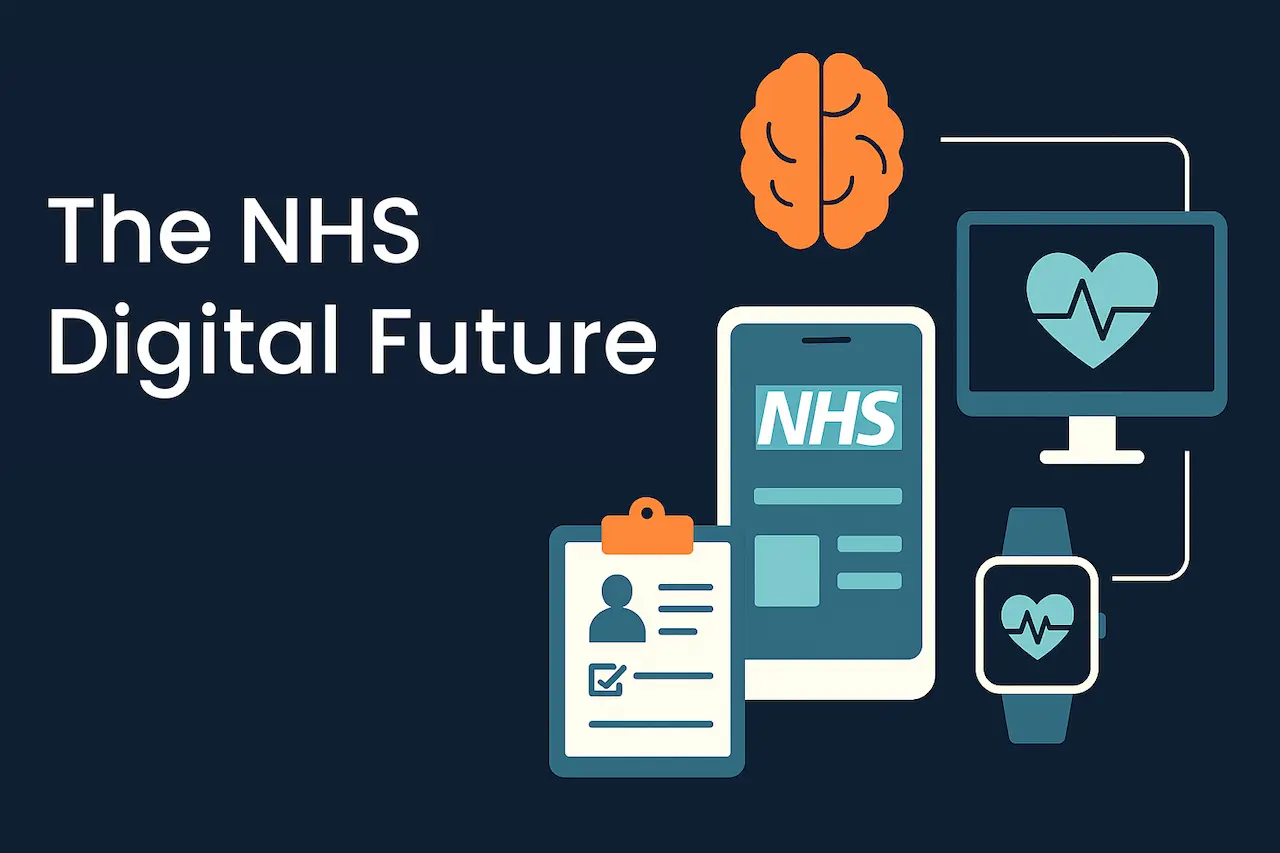The UK Government’s 10-Year Health Plan and Life Sciences Sector Plan make one thing clear: the NHS is moving towards a “Digital-First” model of care – with the NHS App, AI, and patient-owned data at its heart.
For companies in pharma, life sciences, and digital health, this presents both opportunity and uncertainty. While the vision is bold – integrated data, virtual care, streamlined procurement, the path to delivery remains unclear.
At Genetic Digital, we work closely with organisations navigating the complex intersection of healthcare, regulation, and digital. Here’s our perspective on how you can begin to future-proof your digital assets and business models in response to these evolving plans.
1. The NHS App is Becoming the New Gateway to Care
By 2028, the NHS App is expected to become a comprehensive “front door” for health services – from triage to virtual consultations and from medication tracking to diagnostic bookings.
For life sciences companies, this signals a shift: digital engagement may increasingly happen via NHS-owned platforms.
Implication: Think ahead about how your tools, content and services could complement or align with the app ecosystem. It may become the primary way patients and professionals access information, service, and support.
2. Interoperability Will Define Value
The Plan’s proposed Single Patient Record (SPR) aims to unify data across GP, hospital, social care, and personal devices. Patients will contribute data from validated wearables, feeding into more personalised, proactive care.
Implication: Even if you’re not building integrated systems, your digital outputs will increasingly need to reflect and respond to more connected models of care. Thinking about data architecture, consent and user experience now will avoid retrofitting later.
3. AI Is Moving From Backroom Buzzword to Frontline Tool
From AI scribes to diagnostics and workflow automation, the NHS is placing big bets on artificial intelligence. The government’s 10-Year Health Plan outlines plans to embed AI across clinical and operational settings – and not just in theory. A new procurement framework for ambient voice technologies is expected by 2026–27 and validated diagnostic tools are already being trialled.
Most recently, the UK signed a landmark agreement with OpenAI to explore the use of large language models like ChatGPT across public services – including healthcare. While it’s still early days, it signals clear intent: AI will play a growing role in patient communication, triage, and system efficiency.
Implication: If you’re building or marketing tools with any AI component, or even communicating about AI in a healthcare context – there’s a growing expectation for clear value, strong evidence, and ethical design. Trust and usability will matter as much as the technology itself.
4. A Health App Marketplace Is Coming
The HealthStore, a centrally funded app platform, will launch in tandem with expanded NICE approval pathways for digital tools, wearables and diagnostics. Getting listed could become a key route to NHS adoption.
Implication: Now is the time to ensure your tools are designed with clinical validity, compliance documentation, and real-world usability in mind. A strong digital experience – not just a functional tool will likely influence selection and adoption.
Future-Proofing Digital Strategy
It’s tempting to see these policy documents as distant, but they’re laying down the rules for what will become expected, or even required, in the near future. Forward-thinking organisations are using this period to:
- Audit how their digital assets align with NHS and regulatory trajectories
- Clarify value propositions in relation to AI, patient data and integrated care
- Future-proof content and architecture for interoperability and evolving compliance frameworks
We see it not just as a technology shift, but as a business model shift. Those who plan for a digital-first, interoperable, patient-empowered healthcare environment today will be best placed to thrive in it tomorrow.
Let’s Continue the Conversation
We’re strategic partners who can help you shape digital platforms, content and engagement strategies that are fit for the future. If you’d like to explore how these changes might affect your roadmap or digital priorities, we’re happy to share our perspective. Get in touch.

